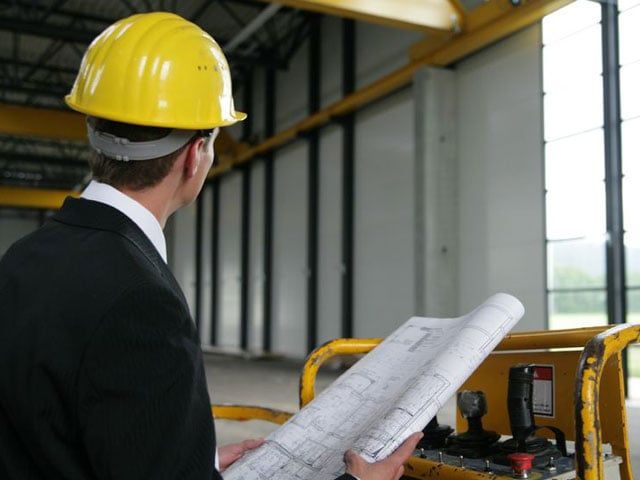Claims for construction defects
The main objective of the LOE is to regulate the building process, updating the legal configuration of the agents involved in construction, setting out their obligations in a much more precise and up-to-date manner, in order to establish responsibilities and cover guarantees for users.
This is determined in art. 1 LOE, stating that the purpose of the regulation is to ensure quality through compliance with the basic requirements of buildings and the adequate protection of the interests of users. However, the legislator has not intended the LOE to exclusively regulate the building process.
Thus, when public administrations and bodies and entities subject to the legislation on public administration contracts act as agents in the building process, they shall be governed by the provisions of the legislation on public administration contracts and, in matters not covered therein, by the provisions of this Act, with the exception of the provisions on mandatory guarantees. Similarly, the prevention of occupational risks shall be governed by its specific legislation.
And, although it is not indicated in this precept, but in the 1st final provision, the legislation of the Autonomous Regions, whose existing civil, foral or special rights are respected, especially as they have exclusive competence in matters of town planning, according to the TC ruling of 20 March 1997. So what is the scope of application of this law? Well, what it calls the building process, which it conceives as the action and result of constructing a building of a permanent nature.

To build, to build, not to demolish, and to maintain and conserve. That is the regulatory objective of this law. But not everything is built. This note of permanence, of the work's vocation for stability, together with the use to which it is destined - although this is not entirely the case - are the requirements that the law also demands, regardless of whether the work is public or private. Not everything is a construction site, we said. The law indicates which buildings the regulations are aimed at and includes under their scope new construction, except those of little constructive entity and technical simplicity that are neither residential nor public and are developed on a single floor; those that alter the architectural configuration of the buildings through reform or rehabilitation, as well as those that have the character of total intervention in listed buildings or with environmental or historical-artistic protection, regulated through legal regulation or urban planning document and those of a partial nature that affect the elements or parts that are the object of protection. For the rest, the building is considered to include its fixed installations and its own equipment, as well as the urbanisation elements that remain attached to the building.
So, at least apparently, not only must one of these works be undertaken in order to fall under the application of the Law, but the result must be one of those indicated in art. 2 LOE. And it is said apparently, as the last of its paragraphs implies that the use of the building is indifferent to the purposes of the LOE. Thus, the building must be used for administrative, sanitary, religious, residential in all its forms, educational and cultural, aeronautical, agricultural, livestock, energy, hydraulic, mining, telecommunications (referring to telecommunications engineering), transport (land, sea, river and air), forestry, industrial, naval, of sanitation and hygiene engineering and accessory to engineering works and their exploitation and, with residual character to any other uses that are not expressly related to the previous ones, a section that renders useless the two previous ones of the precept, which is drafted in this way by the legislator in view of the fact that this precept marks the obligations of qualifications of the agents and their responsibilities. The LOE aims to guarantee the safety of people, the wellbeing of society and the protection of the environment, and to this end, in Chapter 2, apart from the general provisions, although it could well have been one of them, it details the technical and administrative requirements of building, distinguishing between functionality, safety and habitability. Thus, with regard to the first and following the legal terms, which are quite descriptive, the buildings must be such that the layout and dimensions of the spaces and the provision of the installations facilitate the adequate performance of the functions foreseen in the building. They shall be accessible in such a way that persons with reduced mobility and communication are allowed to access and move around the building in accordance with the terms provided for in their specific regulations.
They shall have access to telecommunications, audiovisual and information services in accordance with the provisions of their specific regulations and shall facilitate access to postal services by providing the appropriate facilities for the delivery of mail. With regard to safety, they shall be designed and executed in such a way that no damage is caused to or affects the foundations, supports, beams, floors, slabs, load-bearing walls or other structural elements or directly compromises the mechanical strength and stability of the building. The occupants may vacate the building in safe conditions, establishing mechanisms that allow the extension of the fire within the building itself and adjoining buildings and allow the action of extinguishing and rescue teams.
Furthermore, they must be constructed in such a way that the building does not pose a risk of accident to people (Córdoba Provincial Court ruling of 31 March 2003). As for habitability, buildings must be designed, constructed, maintained and conserved in such a way that acceptable conditions of healthiness and watertightness are achieved in the interior environment of the building and that the building does not deteriorate the environment in its immediate surroundings, guaranteeing adequate management of all types of waste. The user will be protected against noise, so that perceived noise does not endanger people's health and allows them to carry out their activities satisfactorily. Energy shall be saved and the building shall be constructed with thermal insulation, in such a way as to achieve a rational use of the energy necessary for the proper use of the building. And, as a general clause, care shall be taken with any other functional aspects of the construction elements or installations that allow the building to be used satisfactorily, serving the function for which it is intended (in this sense, among others, Judgments of the AP Jaén of 1 June 2001, of the AP Córdoba of 25 July 2002 and of the AP Badajoz of 29 June 2009).
In addition, it should be noted that, in accordance with trans. 1ª LOE and final dispos. 4ª LOE, the Law applies to new construction works and works on existing buildings for whose projects the corresponding building licence is requested, as of its entry into force, namely six months after its publication in the BOE on 6 May 2000, except for the Provisions indicated in relation to compulsory expropriation legislation. In this respect, although the Law contemplates more detailed cases than Art. 1591 CC, it is true that the specific jurisprudential doctrine of the new legislation is not abundant and the majority of judgments apply the CC precept. However, this doctrine is fully applicable to the cases of the LOE, and it can even be affirmed that many of its articles are no more than an expression of the judicial hermeneutics of art. 1591 CC (Judgment of the SC of 17 December 1997). For its part, Royal Decree 314/2006, of 17 March, which approves the Technical Building Code, regulates the basic quality requirements that buildings, including their installations, must meet in order to satisfy the basic requirements of safety and habitability, in development of the provisions of the LOE. Thus, it establishes these basic requirements for each of the basic requirements, established in art. 3 LOE:
- Structural safety,
- Fire safety,
- Safety in use and accessibility,
- Hygiene, health and environmental protection,
- Noise protection,
- Energy saving and thermal insulation.
The basic requirements relating to the functionality and functional aspects of construction elements are governed by their specific regulations, except for those relating to accessibility for people with reduced mobility or communication, which are developed in the CTE (art. 1 Royal Decree 314/2006, of 17 March, approving the Technical Building Code).
News on construction defects

In a recent case involving the exchange of a plot of land in exchange for building work, the Supreme Court has declared that the delay in the delivery of the...